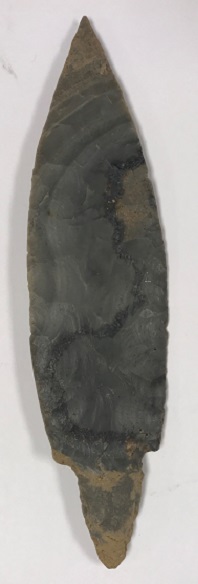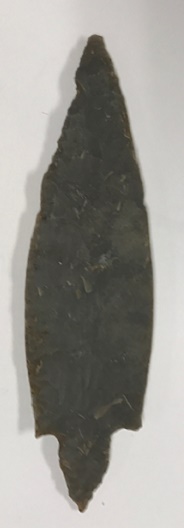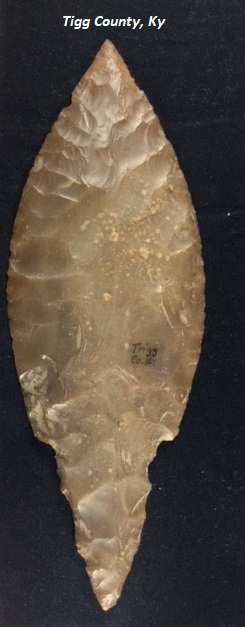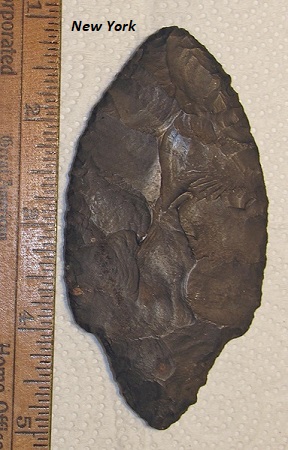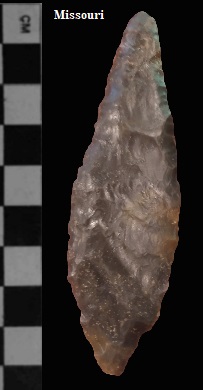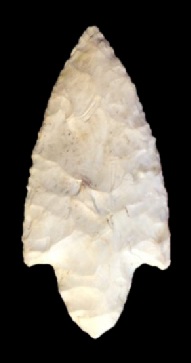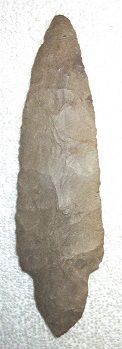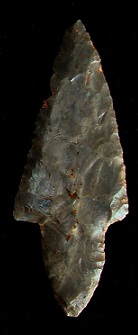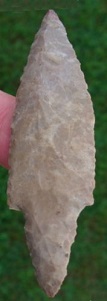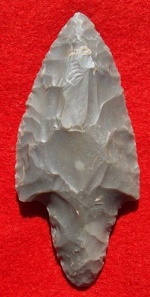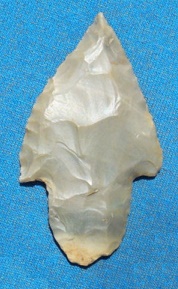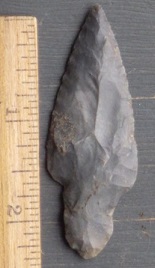Outline is Representative of Size and Shape:
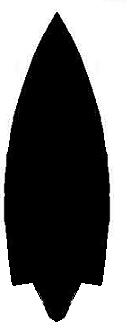
Name Details:
Identified By: Lewis R. Binford
Named For: Harrison County, Indiana
Date Identified: 1963
Type Site:
Identified By: Lewis R. Binford
Named For: Harrison County, Indiana
Date Identified: 1963
Type Site:
Point Validity:
Valid type
Binford was an influential anthropologist who fundamentally changed the field of archaeology with the introduction of processional archaeology of "New Archaeology". He was a professor at the Southern Methodist University and later the University of New Mexico. This type was named in a professional publication and has many professional references. This is considered a valid type.
Binford was an influential anthropologist who fundamentally changed the field of archaeology with the introduction of processional archaeology of "New Archaeology". He was a professor at the Southern Methodist University and later the University of New Mexico. This type was named in a professional publication and has many professional references. This is considered a valid type.
Hebron Turkeytail
AKA: HebronCluster: Turkeytail Cluster
Description of Physical Characteristics and Flaking Pattern:
This is a triangular medium to large contracting stem point with a flattened to elliptical cross section. The blade is primarily excurvate, but some examples may have a straight blade. The shoulders angle downwards with a straight edge. The stem is contracting. The base is pointed to strongly convex. This point has a random flaking pattern.
Size Measurements:
Total Length - 50 to 170 mm, Stem Length - 16 to 29 mm, Blade Width - 23 to 39 mm, Stem Width at Shoulder - 13 to 30 mm
Total Length - 50 to 170 mm, Stem Length - 16 to 29 mm, Blade Width - 23 to 39 mm, Stem Width at Shoulder - 13 to 30 mm
Commonly Utilized Material:
Additional Comments:
This variation has more of a contracting stem than other variations.
This is an uncommon variation.
This variation is similar to the Adena Waubesa point, the key difference is the straight downward angled shoulder.
This variation has more of a contracting stem than other variations.
This is an uncommon variation.
This variation is similar to the Adena Waubesa point, the key difference is the straight downward angled shoulder.
Distribution: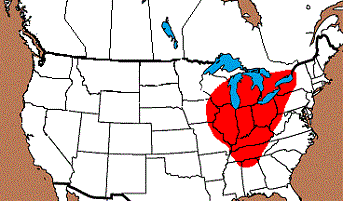
Distribution Comments:
This point has the heaviest concentration in the Ohio River Valley. This point may also be found into the Great lakes region and through out the Tennessee River valley.
This point has the heaviest concentration in the Ohio River Valley. This point may also be found into the Great lakes region and through out the Tennessee River valley.
Age / Periods:
Date: 4,000 - 2,500 B.P.
Cultural Period: Late Archaic to Early Woodland
Glacial Period: Neoglacial
Culture: Adena Culture
Date: 4,000 - 2,500 B.P.
Cultural Period: Late Archaic to Early Woodland
Glacial Period: Neoglacial
Culture: Adena Culture
Age Details:
Other points in this cluster / Related / Associated Points:
Adena Blade, Adena Dickson, Adena Narrow Stem, Adena Robbins, Adena Snapped Base, Adena Vanishing Stem, Adena Waubesa, Cresap, Gary, Harrison Kramer, Little Bear Creek
Adena Blade, Adena Dickson, Adena Narrow Stem, Adena Robbins, Adena Snapped Base, Adena Vanishing Stem, Adena Waubesa, Cresap, Gary, Harrison Kramer, Little Bear Creek


